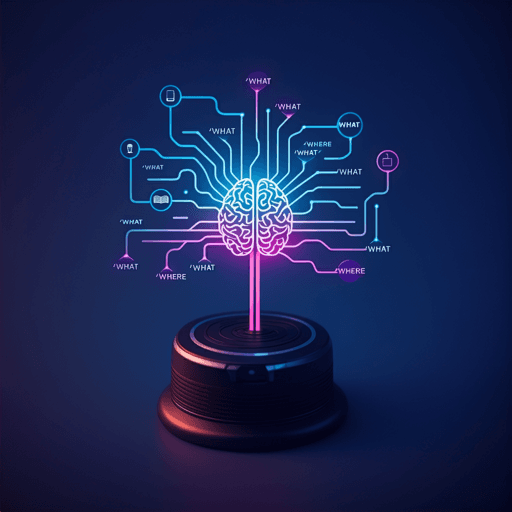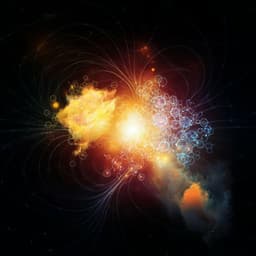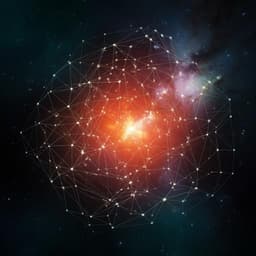
Medicine and Health
Concept and location neurons in the human brain provide the 'what' and 'where' in memory formation
S. Mackay, T. P. Reber, et al.
Our brains fuse the 'who/what' and 'where' of experience into lasting memories — this study shows that distinct neurons in the human medial temporal lobe (concept cells in hippocampus, amygdala, entorhinal cortex, and parahippocampal location-selective neurons) increase firing during successful encoding, supporting hippocampal indexing. Research conducted by Sina Mackay, Thomas P. Reber, Marcel Bausch, Jan Boström, Christian E. Elger, and Florian Mormann.
~3 min • Beginner • English
Introduction
The study addresses how the human medial temporal lobe (MTL) transforms perception into episodic memory by binding 'what/who', 'where', and 'when' information. Although spatial, temporal, and semantic representations have been documented in MTL across species, the specific single-neuron mechanisms supporting successful encoding remain unclear and prior results have been inconsistent, especially at the level of selective single neurons. The authors hypothesize that sparse, visually selective neurons—concept cells representing semantic content and location-selective neurons representing spatial positions—exhibit subsequent memory effects during encoding, thereby providing the 'what' and 'where' components needed to form associative memories.
Literature Review
Prior work in rodents and primates has identified spatial coding in the MTL, including hippocampal place cells and entorhinal grid cells, as well as neurons modulated by temporal sequences and elapsed time. Human work (fMRI/MEG) supports hexagonal grid representations in EC during virtual navigation, and single-neuron studies report entorhinal cells tuned to anticipated target locations, though human EC may not generally process scenes and spatial information. Parahippocampal cortex (PHC) has been linked to spatial navigation and topographical learning, showing both allocentric and egocentric coding. A key MTL finding is concept cells in hippocampus, amygdala, and EC that respond invariantly to semantic content (e.g., famous persons, animals, objects) and align with conscious perception and imagery/free recall, making them candidates for the semantic building blocks of episodic memory. PHC differs by earlier, less selective responses and involvement in scene and spatial features. Previous single-neuron studies of memory have found population-level subsequent memory effects but often not in selectively responsive single neurons during encoding, potentially due to sparse coding where effects appear in small neuronal subsets.
Methodology
Participants: 13 in-patients (20–62 years; 8 female) with drug-resistant epilepsy undergoing intracranial monitoring at University Hospital Bonn. Bilateral depth electrodes targeting amygdala, hippocampus, entorhinal cortex (EC), and parahippocampal cortex (PHC) were used. Ethics approval and informed consent obtained.
Electrophysiology: Behnke-Fried microelectrode bundles (8 recording + 1 reference per macro electrode) recorded at 32 kHz (Neuralynx ATLAS). Spike sorting via Combinato with artifact rejection; manual curation; classification into single units (SU) and multi-units (MU). Total 3681 units across 44 sessions: amygdala 1117, hippocampus 1391, EC 571, PHC 602 (1816 SU, 1865 MU). SU had higher SNR than MU (median 2.85 vs. 2.08, P<10⁻³⁸).
Screening: Morning screening identified response-eliciting images. Object screening (OS): 100 common objects/animals, each shown 10 times, decision task (“man-made?”). Person screening (PS): 100–150 personalized images (friends/family/public figures/places/objects), each shown 6 times, decision task (“contains a face?”). Stimuli for main task were drawn from responsive items to cover diverse semantic concepts.
Task: Associative memory paradigm on a touchscreen with a 3×3 grid. During encoding, images appeared one at a time at random grid locations; participants confirmed by tapping the presented square within 1.5–3.5 s (green frame feedback). Invalid trials (off-target/missing taps) were excluded. After encoding, a 15 s distractor (count down by 3s from a random 80–100) prevented rehearsal. Retrieval: items presented beneath an empty grid in shuffled order; participants tapped the remembered location. Session duration fixed at 35 min with multiple runs; difficulty adapted in real-time: presentation duration adjusted in 0.5 s steps between 1.5–3.5 s, and set size (number of images per run) increased/decreased by 1 after 3 consecutive high/low-performance trials (performance bins: >65% high, <35% low, otherwise medium). Initial set size 2; item pool per session 4–8 based on expected performance. Average per session: 168.6 trials (sd 49.9), 58.8 runs (sd 12.3), mean set size 3.18 (sd 1.17). Overall more correct than incorrect trials (13.3 vs. 10.7 on average).
Responsiveness criteria: Binwise Wilcoxon rank-sum test in overlapping 100 ms bins (50% overlap) from 0–1000 ms post-stimulus with Simes correction across 19 bins; alpha=0.001. Item responses: significant response to ≥1 item; location responses: significant response to ≥1 grid square. For neurons responding to multiple preferred items/locations, trials were averaged across all preferred stimuli.
Statistical tests: Fraction of responsive neurons assessed vs. chance via (1) binomial test with P=0.001 (nominal size) and (2) permutation test with 10,000 label shuffles (empirical size). Population subsequent memory effects (remembered vs. forgotten) assessed with a cluster permutation test on convolved firing rates aligned to stimulus onset (and for PHC location neurons also to confirmation tap); clusters formed from paired t-tests (P<0.05) and evaluated against 10,000 shuffles (top 5% retained). Linear mixed-effects models examined relationships between subsequent memory and set size, reaction time, and trial duration, with random intercepts/slopes per patient and session (nested), reporting fixed-effect slopes.
Control analyses: Excluding neurons classified as both item and location left main effects unchanged. Split-half (first vs. second trial halves) showed similar results. During retrieval, preferred items evoked higher firing across all regions (all P<0.001, signed-rank), and PHC location cells responded more to preferred locations (P<0.001), computed in the 1000 ms before the response tap.
Delay-period analysis: For neurons selective to exactly one stimulus, average firing during the distractor period was compared for subsequently remembered vs. forgotten episodes (normalized to the 500 ms pre-encoding baseline); no significant differences overall (t(191)=-0.68, P=0.50), nor within regions (all P>0.1), nor for PHC location neurons (t(26)=-0.21, P=0.84).
Key Findings
- Adaptive task design achieved ~50% recall with significant behavioral associations: subsequently forgotten trials occurred in larger sets (B=-0.27, P<10⁻¹⁶) and had longer reaction times (β=0.02, P=0.01); trial duration had no effect (B=0.004, P=0.9).
- High fractions of item-selective neurons across all recorded regions (amygdala, hippocampus, EC, PHC) were detected using stringent responsiveness criteria (all P<10⁻⁴³, binomial test). Empirical sizes from 10,000 label shuffles confirmed true above-chance responsiveness (alpha<10⁻⁴ in all regions).
- Subsequent memory effects in item-selective neurons: firing rates during encoding were higher for subsequently remembered vs. forgotten items in amygdala (latency 239–1249 ms; d=0.36; cluster P<10⁻⁵), hippocampus (531–796 ms; d=0.33; P=0.010), and EC (491–618 ms; d=0.21; P=0.038), generally after the initial 250–500 ms peak. No item-memory effect was observed in PHC.
- Location-selective responses: Significant fractions of location-responsive neurons by binomial test were found in amygdala, hippocampus, and PHC (all P<10⁻²³); however, permutation-based empirical sizes indicated above-chance proportions only in PHC (0.0027), not in amygdala (0.23) or hippocampus (0.81). In PHC, 8.80% of neurons responded to at least one grid square, a higher proportion than amygdala or hippocampus (χ²=40.50 and 53.08; both P<10⁻⁴).
- PHC location neurons showed robust subsequent memory effects: higher firing in remembered trials in a later window (1059–1444 ms; aligned to stimulus onset, d=0.60; P<10⁻⁶), and when aligned to the confirmation tap, reactivation occurred post-tap (25–506 ms; d=0.37; P<10⁻⁵), arguing against motor confounds.
- Neurons without significant item or location selectivity showed smaller subsequent memory effects in amygdala (d=−0.10; pre-stimulus; P=0.046) and EC (pre-stimulus d=−0.23, P=0.031; post-stimulus d=0.14, P=0.005) compared to selective populations (d=0.21–0.60).
- No evidence for selective reactivation during the intervening 15 s distractor (counting) period (overall and within regions, all P>0.1).
- Retrieval-phase confirmation: preferred items elicited higher firing in amygdala, hippocampus, EC, and PHC (all P<0.001), and PHC location cells responded more to preferred locations (P<0.001), supporting the interpretation of genuine item and location selectivity rather than mere associations.
Discussion
Findings demonstrate that sparse, selective neuronal populations in the human MTL carry predictive signals for successful encoding of associative item-location memories. Concept-like item neurons in amygdala, hippocampus, and EC provide the 'what/who' component, exhibiting increased firing during encoding of items later recalled. PHC location-selective neurons deliver the 'where' component, with subsequent memory effects occurring later than item effects, consistent with cognitive models where location information is processed with lower prominence than agents or objects. The pattern aligns with hippocampal indexing theory: hippocampal (and possibly amygdala/EC) item neurons may act as index pointers to neocortical semantic representations, whose coordinated activation could strengthen connections to spatial representations. In contrast, PHC location neurons, which showed robust selectivity and retrieval-phase preference, may reflect neocortical population codes for spatial information rather than pointer-like indexing. EC activity resembled amygdala/hippocampus rather than PHC in this task, potentially due to the non-egocentric, map-like spatial demands. Together, the results support a division of labor where distinct neuron populations contribute complementary 'what' and 'where' signals to episodic memory formation.
Conclusion
This study identifies and characterizes two specialized neuron populations in the human MTL that support episodic memory encoding: concept-like item neurons (amygdala, hippocampus, EC) and parahippocampal location neurons (PHC). Both populations show increased firing during successful encoding, linking the 'what' and 'where' necessary for forming item-location associations. These findings provide single-neuron evidence consistent with hippocampal indexing and a neocortical representation of spatial information in PHC. Future work should test whether these neurons undergo offline reactivation during consolidation (e.g., slow-wave sleep), delineate the role of EC under tasks requiring egocentric navigation, probe temporal ('when') coding in isolation, and examine the stability and plasticity of concept and location codes over longer timescales and contexts.
Limitations
- The task design intentionally prevented rehearsal and was not suited to study consolidation; any hypotheses about offline reactivation remain speculative.
- Spatial demands were map-like rather than egocentric; EC’s limited location responsiveness may reflect task design rather than lack of spatial coding.
- Participants were epilepsy patients with intracranial electrodes; although prior work suggests minimal impact, generalizability to healthy populations may be constrained.
- Location responsiveness in amygdala and hippocampus did not exceed chance by permutation tests, suggesting possible epiphenomenal effects tied to visual stimuli rather than true spatial coding in these regions for this task.
- Temporal ('when') coding was not directly targeted and is difficult to disentangle from task/behavioral confounds.
- Small fractions of neurons show effects within a sparse coding framework, potentially limiting detection power for additional responsive subtypes.
Related Publications
Explore these studies to deepen your understanding of the subject.







